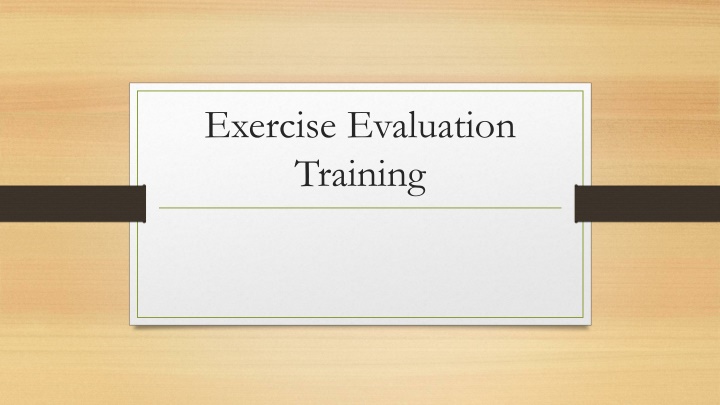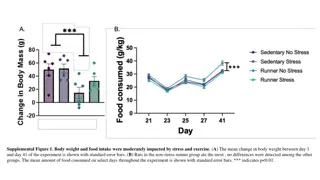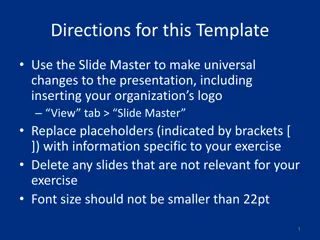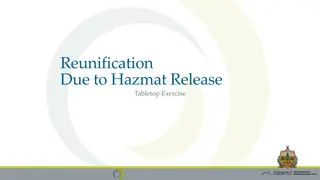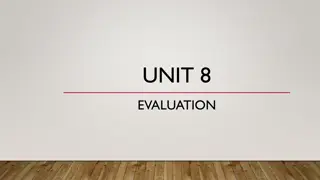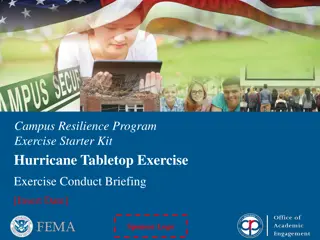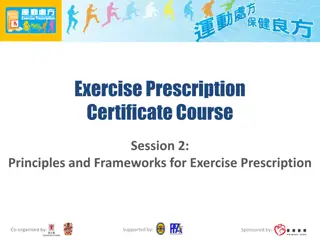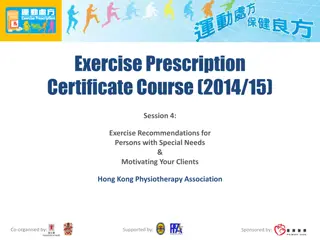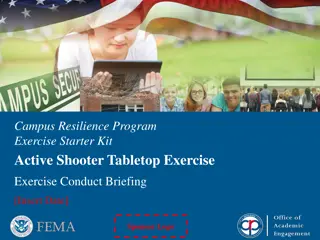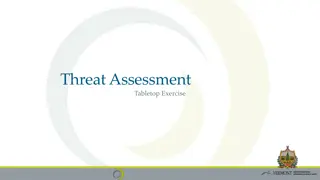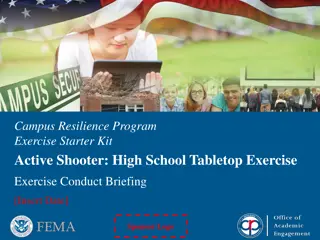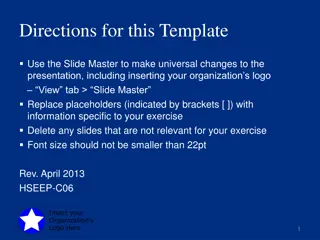Exercise Evaluation Training
Controllers and Evaluators play crucial roles in exercise evaluation. Controllers ensure the exercise meets objectives while maintaining safety and focus. Evaluators organize evaluation, observe, and collect data to identify strengths and areas for improvement. Exercise Evaluation Guide (EEG) provides a tool for consistent observation and data collection, aligning with core capabilities. EEG ratings help assess performance levels. Evaluator responsibilities include recording critical tasks and assessing capability targets during and before the exercise.
Download Presentation

Please find below an Image/Link to download the presentation.
The content on the website is provided AS IS for your information and personal use only. It may not be sold, licensed, or shared on other websites without obtaining consent from the author.If you encounter any issues during the download, it is possible that the publisher has removed the file from their server.
You are allowed to download the files provided on this website for personal or commercial use, subject to the condition that they are used lawfully. All files are the property of their respective owners.
The content on the website is provided AS IS for your information and personal use only. It may not be sold, licensed, or shared on other websites without obtaining consent from the author.
E N D
Presentation Transcript
Exercise Evaluation Training
Control/Evaluation Controllers and Evaluators (C/E) are the cornerstones of a successful exercise Controllers ensure each exercise meets objectives Evaluators capture and analyze the results This allows an exercise to: Identify improvements needed Highlight best practices (Strengths) Enhance preparedness
What do Controllers do? Safety and security Drive the entire exercise, maintaining scope, pace, and integrity Simulation Keep the exercise focused on stated objectives
What do Evaluators do? Organize exercise evaluation Observe the exercise and collect the data Identify strengths, areas for improvement and additional notes during exercise play Do not focus on a single player Evaluate as a position or overall function
Exercise Evaluation Guide (EEG) EEGs provide a consistent tool to guide exercise observation and data collection EEGs align to selected core capabilities They list capability targets and critical tasks being evaluated Support development of the AAR
EEG Ratings Four ratings on the EEG: Performed without challenges (P) Performed with some challenges (S) Performed with major challenges (M) Unable to be performed (U)
Evaluator Responsibilities Before the Exercise Understand that the Evaluator s primary duties are to observe, record, and analyze player actions Review the exercise documents and organizational procedures for familiarity Prepare to keep an accurate record of what you observe and hear
Evaluator Responsibilities During the Exercise Record the following: If and how critical tasks were performed How the capability target was or was not met How were requests made handled Any other factors contributing to the outcomes of the capability targets
Evaluator No Nos Do not engage in casual conversation about the exercise/with exercise players Do not prompt players to action Do not interrupt an exercise player to ask a question
C/E Collaboration During the Exercise Controllers and Evaluators work as a team If a player asks a question about the exercise or how to proceed with a given issue, refer the player to the controller.
C/E Collaboration During the Exercise Cont. Evaluators should interact with the Controllers regarding: Issues with exercise safety Need to speed up or slow down play Need to prompt play to generate a player response Clarification of any other exercise issues
Evaluator Responsibilities After the Exercise Ensure that all observations have been noted on the EEGs Participate in the player Hotwash Summarize personal notes and Hotwash notes before the C/E debriefing Attend C/E debriefing after the Hotwash Make sure all EEGs are signed in case additional information is needed
Trusted Agent An individual who is trusted not to reveal exercise and scenario details to players before exercise conduct. Trusted agents are not exercise players. Exercise Planning Team, Controllers, and Evaluators
